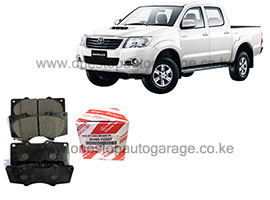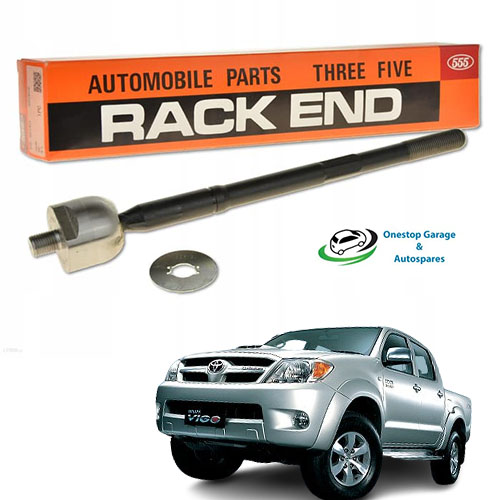-10%
Find the best Prices for Rack End Toyota Hilux Vigo 4wd Vigo in Nairobi, Kenya
Within the intricate system of a vehicle’s steering mechanism, the steering rack end holds a pivotal role in ensuring precise control and responsiveness. This often overlooked component, located at the ends of the steering rack, plays a crucial role in connecting the steering system to the wheels. In this comprehensive guide, we will explore the functions of the steering rack end, its importance in vehicle dynamics, signs of wear and tear, and the significance of timely maintenance and replacement.
Function of the Steering Rack End:
The steering rack end, also known as the tie rod end, is an essential link between the steering rack and the wheel assembly. Its primary function is to transmit the rotational motion of the steering rack to the wheels, allowing for the directional control of the vehicle. This connection ensures that the driver’s input on the steering wheel translates into precise movement of the wheels, facilitating accurate steering and maneuverability.
Importance in Vehicle Dynamics:
The steering rack end plays a vital role in maintaining proper wheel alignment. When the tie rod end is in good condition, it helps prevent misalignment issues, ensuring that the wheels are parallel and perpendicular to the road surface. Proper alignment not only contributes to stable handling but also extends the lifespan of tires by promoting even tire wear. In addition, the steering rack end influences the vehicle’s turning radius, impacting its agility and responsiveness on the road.
Signs of Wear and Tear:
Like any automotive component, the steering rack end is subject to wear and tear over time. Recognizing the signs of potential issues is crucial for maintaining the safety and performance of your vehicle. Common indicators of a failing steering rack end include:
- Loose or Unresponsive Steering: If you notice increased play or a lack of responsiveness in the steering wheel, it may indicate wear in the steering rack end.
- Knocking or Clunking Noises: Unusual noises, such as knocks or clunks, while steering or going over bumps could be a sign of a loose or damaged tie rod end.
- Uneven Tire Wear: Irregular tire wear patterns, particularly on the inner or outer edges of the tires, may suggest misalignment issues caused by a worn steering rack end.
- Fluid Leaks: Any signs of fluid leaks around the steering rack end should be addressed promptly, as this may indicate damage to the protective boot, allowing contaminants to enter and compromise the joint.
Timely Maintenance and Replacement:
Regular maintenance checks, including inspections of the steering rack end, are crucial for early detection of potential problems. Routine checks should include examining the rubber boots for damage, ensuring proper lubrication of the joint, and verifying the tightness of the securing nuts.
When signs of wear become evident, prompt replacement of the steering rack end is essential. Delaying replacement can lead to more extensive damage, affecting not only the steering system but also jeopardizing overall vehicle safety. It is advisable to replace tie rod ends in pairs to maintain balance and symmetry in the steering system.
Conclusion:
In the intricate dance of automotive components that ensure a smooth and controlled driving experience, the steering rack end is a crucial performer. Its role in transmitting steering input to the wheels directly affects a vehicle’s handling, alignment, and overall safety. Recognizing the signs of wear and tear, conducting regular maintenance checks, and promptly addressing any issues with the steering rack end contribute to the longevity and reliability of your vehicle. As a driver, understanding the significance of this seemingly modest component empowers you to take proactive measures, ensuring that your vehicle responds precisely to your commands and, most importantly, keeping you and your passengers safe on the road.



